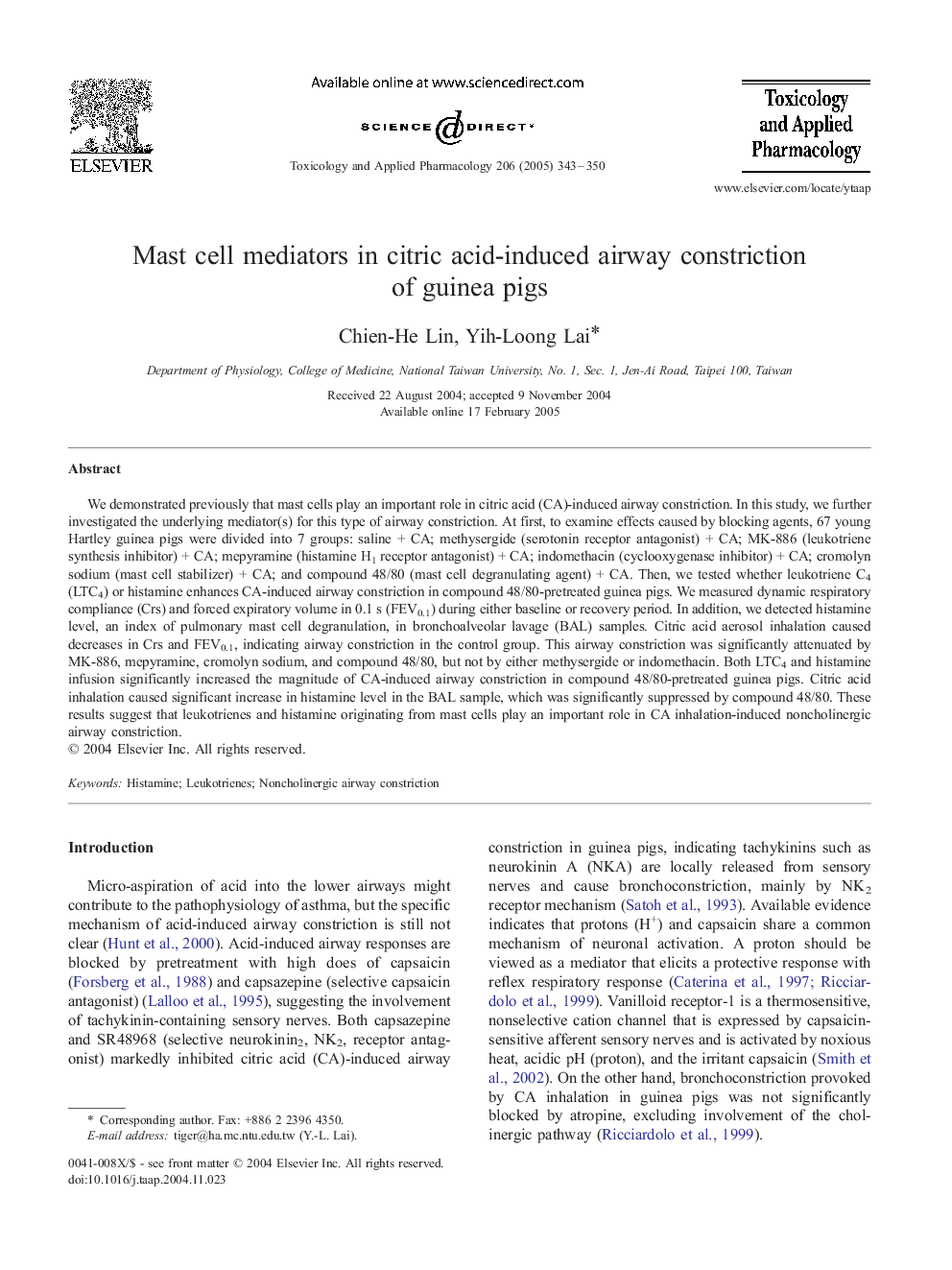| Article ID | Journal | Published Year | Pages | File Type |
|---|---|---|---|---|
| 9018106 | Toxicology and Applied Pharmacology | 2005 | 8 Pages |
Abstract
We demonstrated previously that mast cells play an important role in citric acid (CA)-induced airway constriction. In this study, we further investigated the underlying mediator(s) for this type of airway constriction. At first, to examine effects caused by blocking agents, 67 young Hartley guinea pigs were divided into 7 groups: saline + CA; methysergide (serotonin receptor antagonist) + CA; MK-886 (leukotriene synthesis inhibitor) + CA; mepyramine (histamine H1 receptor antagonist) + CA; indomethacin (cyclooxygenase inhibitor) + CA; cromolyn sodium (mast cell stabilizer) + CA; and compound 48/80 (mast cell degranulating agent) + CA. Then, we tested whether leukotriene C4 (LTC4) or histamine enhances CA-induced airway constriction in compound 48/80-pretreated guinea pigs. We measured dynamic respiratory compliance (Crs) and forced expiratory volume in 0.1 s (FEV0.1) during either baseline or recovery period. In addition, we detected histamine level, an index of pulmonary mast cell degranulation, in bronchoalveolar lavage (BAL) samples. Citric acid aerosol inhalation caused decreases in Crs and FEV0.1, indicating airway constriction in the control group. This airway constriction was significantly attenuated by MK-886, mepyramine, cromolyn sodium, and compound 48/80, but not by either methysergide or indomethacin. Both LTC4 and histamine infusion significantly increased the magnitude of CA-induced airway constriction in compound 48/80-pretreated guinea pigs. Citric acid inhalation caused significant increase in histamine level in the BAL sample, which was significantly suppressed by compound 48/80. These results suggest that leukotrienes and histamine originating from mast cells play an important role in CA inhalation-induced noncholinergic airway constriction.
Keywords
Related Topics
Life Sciences
Environmental Science
Health, Toxicology and Mutagenesis
Authors
Chien-He Lin, Yih-Loong Lai,
